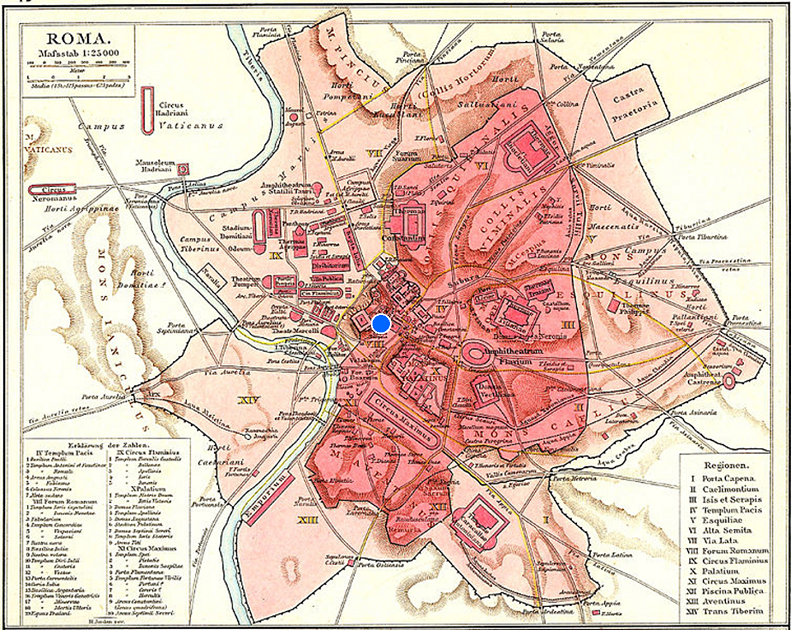Temple of Saturn
The Temple of Saturn (Latin: Templum Saturni or Aedes Saturnus, Italian: Tempio di Saturno) is a temple to the god Saturn in ancient Rome. The original dedication of a temple to Saturn was traditionally dated to 497 BC,[1] but ancient writers disagreed greatly about the history of this site.[2] The ruins of the temple stand at the foot of the Capitoline Hill in the western end of the Forum Romanum.
Contents |
Archaeology
Gradual collapse has left nothing but the remains of the front portico standing. The partially preserved pediment displays the inscription Senatus Populusque Romanus incendio consumptum restituit, meaning "The Senate and People of Rome have restored what fire consumed". The pediment and eight surviving columns represent one of the iconic images of Rome's ancient architectural heritage.
History
The location of the temple is connected to the much older Altar of Saturn, which tradition associates with the god himself founding a settlement on the Capitoline Hill. Construction of the temple is thought to have begun in the later years of the Roman Kingdom under Tarquinius Superbus (circa 497 BC. Its inauguration by the Consul Titus Lartius took place in the early years of the Republic. The temple was completely reconstructed by Munatius Plancus in 42 BCE.
The present ruins represent the third incarnation of the Temple of Saturn, replacing a second incarnation that had been destroyed by the fire of Carinus in 283 AD. The extant inscription on the frieze commemorates the restoration undertaken after the fire.
Interior
According to ancient sources, the statue of the god in the interior was veiled and equipped with a scythe. The image was made of wood and filled with oil. The legs were covered with bands of wool which were removed only on December 17, the day of the Saturnalia.
In Roman mythology, Saturn ruled during the Golden Age, and he continued to be associated with wealth. His temple housed the treasury (aerarium),[3] where the Roman Republic's reserves of gold and silver were stored. The state archives and the insignia and official scale for the weighing of metals were also housed there. Later, the aerarium was moved to another building, and the archives transferred to the nearby Tabularium. The temple's podium, in concrete covered with travertine, was used for posting bills.
Notes
1. Robert E.A. Palmer, Rome and Carthage at Peace (Franz Steiner, 1997), p. 63; Hans-Friedrich Mueller, "Saturn," in The Oxford Encyclopedia of Ancient Greece and Rome, p. 221.
2. Lawrence Richardson, A New Topographical Dictionary of Ancient Rome (Johns Hopkins University Press, 1992), p. 343.
3. Bates University, course on Temples of Castor and Pollux and Saturn.
